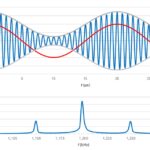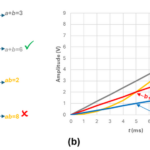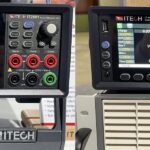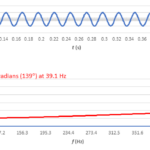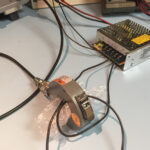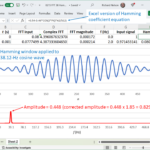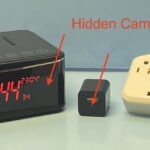Before those 800G links can operate, they need testing. San Diego — The 2024 Optical Fiber Communications Conference (OFC) took place here from March 25 to 28. While companies highlighting their optical transceiver modules, semiconductors, and network equipment all touted how they support AI and data centers, none of that happens without test equipment. Optical […]
Featured
Spectrum measurements shed light on sign malfunctions
Interference in the 900 MHz band appears to produce random errors in a gas station price sign. Spectrum analyzers help track it down. I received a call recently from a former client who manufactures electronic signs. A gas station was experiencing intermittent loss of wireless control of its signs, which displayed the price of various […]
What is intermodulation, and is it good or bad? Part 2
A mixer can upconvert and downconvert a modulated signal with no loss of baseband information. Part 1 of this series described intermodulation resulting from the combining of two or more sinusoidal signals through a nonlinear device such as the mixer in Figure 1. The mixer’s output is the product of its two inputs, and its […]
What is intermodulation, and is it good or bad? Part 1
Sinusoidal inputs applied to a nonlinear system produce an output containing different frequencies, and the results can be good, bad, or ugly. According to the dictionary definition, intermodulation is “the production in an electrical device of currents having frequencies equal to the sums and differences of frequencies supplied to the device.” In the literature of […]
APEC 2024: Test equipment
Test equipment is everywhere. Every trade show has it regardless of the focus. Power is no exception. At APEC 2024, EE World visited several booths displaying test equipment: meters, oscilloscopes, source-measure units (SMUs), bench power supplies, and electronic loads. The photos and videos below highlight what we saw, presented in alphabetical order by company. In […]
Why does the Fourier transform provide apparently inaccurate results, and what can I do about it? Part 4
The FFT can measure phase angle, but what appears to be a meaningful result might just be the arctangent of a ratio of rounding errors. Throughout this series, we reviewed the fast Fourier transform (FFT) as implemented in Microsoft Excel and investigated windowing functions. In this final part, we’ll cover phase measurements, but first, let’s […]
How to separate differential and common-mode harmonic noise currents
Differential-mode and common-mode currents can cause your product to produce radiated and conducted emissions. These three techniques can help you measure them.
Why does the Fourier transform provide apparently inaccurate results, and what can I do about it? part 3
Windowing functions account for mismatches between an input signal and FFT sample size. We concluded part 2 of this series with a look at fast Fourier transforms (FFTs) of 39.1-Hz and 38.12-Hz cosine waves, with our sample size N = 512 and our sample interval Δt = 1 ms (Figure 1). Shouldn’t the amplitudes of […]
Why does the Fourier transform provide apparently inaccurate results, and what can I do about it? part 2
A bare-bones implementation of the Fast Fourier Transform helps illuminate how to extract frequency information from input data samples. In part 1 of this series, we reviewed the discrete Fourier transform (DFT) and manually calculated one DFT shown in Table 1. Table 1. Manual DFT results DFT input Complex DFT |DFT| 3 12 + j0 […]
Review: Electronic bug and hidden camera detectors
Do you want assurance that cameras embedded in everyday devices don’t spy on you? Then you should check for cameras, SD card slots, and Wi-Fi-connections. We reviewed two devices that help you find those lurking spies. While discovering a hidden camera in an Airbnb, VRBO, or hotel is rare, there have been reports of travelers […]


